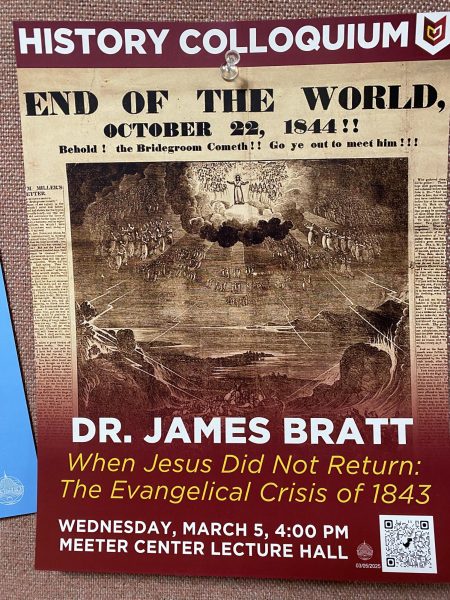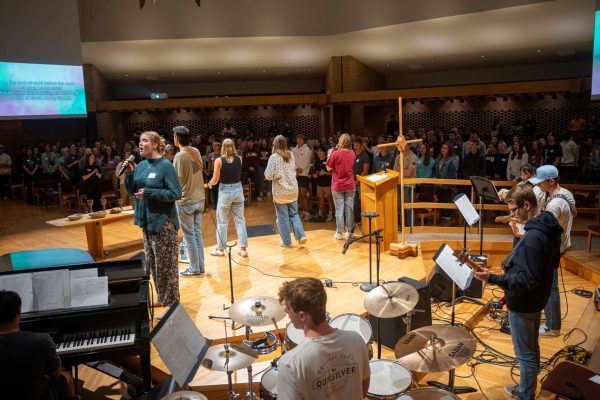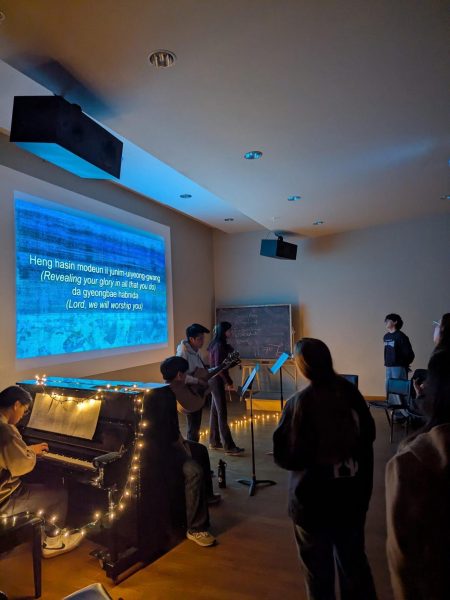Students experience Orthodox Easter
Pascha, another word for Easter, is the service celebrated by the Eastern Orthodox Church. For an Early Christian and Byzantine Art class, a small group of Calvin students attended St. Nicholas Orthodox Church, where the service follows the Syrian pattern. One of the hallmarks of this service is the Paschal Matins, a special divine liturgy that sees the priests and congregation remove themselves, temporarily, from the sanctuary.
The service began inside a dark church, and each attendee was handed a candle. After an opening of chanted Divine Liturgy and censing, the head priest lit a candle, inviting all the congregation to join him in a candle-lit procession. The procession headed outside the church and assembled outside the doors. After another round of liturgy, the Priest knocked on the door and recited Psalm 24:9, “Lift up your heads, O gates! And be exalted, you everlasting doors, that the King of Glory may enter in!”
An interlocutor inside the church answered, but would not open the door until the priest knocked two more times. Once the doors opened, the lights of the church were raised and the Paschal Divine Liturgy began in earnest.
In all, the service lasted from 10 p.m. until 1 a.m. “It felt shorter than three hours,” said James Westenbroek, a Calvin senior, attending the service for the second time in two years. “It definitely wasn’t cookie-cutter … things seemed a little different. It’s really a unique experience every time.”
The service included many different songs and passages of scripture that were continuously repeated, leading to a lot of confusion for a first-timer.
“We thought that we were on the 36th page, but later found out that we were only on the 22nd,” said Westenbroek.
But even though the service can be confusing, “there is something to be said about ceremony and ritual,” said Steven Meyaard, another Calvin senior, attending the Pascha for the first time. “It felt like I was participating in something larger than myself. It wasn’t about ‘you’ feeling nice. You were a part of something much bigger than you.”
This was clearly evident as the service climaxed with the giving of the Eucharist. One by one, the members of St. Nicholas proceeded up the center aisle, arms crossed in front of their chests in a sign of submission to receive the Eucharist. Even though visitors were not allowed to receive communion, they were invited to partake of the Peace Bread, portions of holy bread blessed by the priests during the Divine Liturgy.
After the Eucharist, the service quickly concluded. The priests took turns blessing a basket of dyed red eggs, which they invited everyone in the congregation to come up and receive. After the service, there was a breakfast of lamb, rice, various salads and potatoes. Individual families brought their own Pascha baskets full of wines, beers and favorite Pascha foods.
Throughout the halls there was one greeting, “Christ is risen!” To which the response was “Truly, he is risen!”





